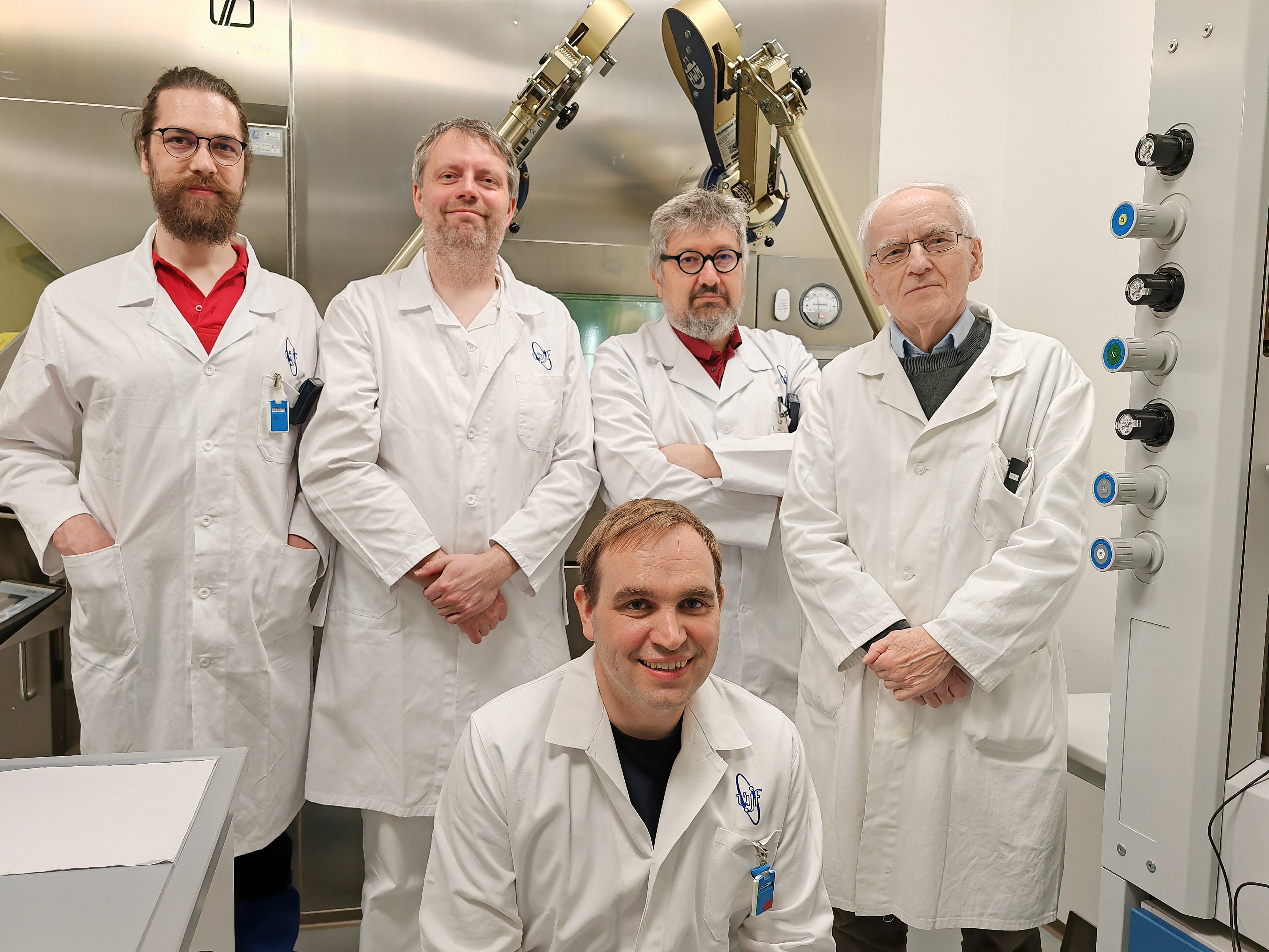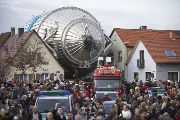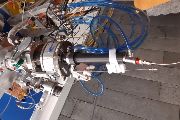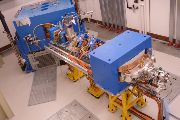
Neutrino is lighter than previously thought. NPI contributed to the record measurement
11. 04. 2025

Scientists from the international KATRIN experiment have determined the tightest direct upper limit of the mass of the neutrino - the most numerous particle that is all around us but escapes normal detection. The new result shows that the neutrino weighs less than 0.45 electron volts, about a million times less than the mass of an electron. A team from the Institute of Nuclear Physics of the Czech Academy of Sciences was also instrumental in the measurements, which were published in the prestigious journal Science.
With this latest release, KATRIN has set a new world record, lowering the mass limit by 0.35 electron volts from the 2022 value of 0.8 electron volts. Behind this milestone is a unique experiment in Karlsruhe, Germany, involving more than 20 research institutions from seven countries.
"This result keeps KATRIN at the forefront of world research in the field of direct neutrino mass measurement. We have now already reached a limit four times tighter than the previous generation of experiments," says Kathrin Valerius from KIT Karlsruhe.
KATRIN uses the beta decay of tritium, an unstable isotope of hydrogen, to determine the neutrino mass. The key contribution of Czech scientists from the Institute of Nuclear Physics of the CAS was the development of a gaseous source of monoenergetic electrons based on the radioactive decay of one of the isotopes of krypton.
“This source is the gold standard for precision energy calibration of the beta spectrum and the only way to determine the correction necessary to determine the neutrino mass,” says Drahoslav Vénos from the Department of Heavy Ion Physics at the Institute of Nuclear Physics of the CAS.
The team from the Nuclear Physics Institute co-founded the KATRIN experiment in 2001. The NPI is also the only scientific institution in the Czech Republic participating in this important experiment.
Ondřej Lebeda, Head of the Department of Radiopharmacy at the Nuclear Physics Institute added: "Years of experience in radionuclide preparation, separation methods and process automation have enabled us to safely prepare a unique krypton source with the desired properties.”
Neutrinos are among the most mysterious particles in the Universe. They are all around us, but they are also extremely difficult to detect. In the Universe, they influence the formation of the large-scale structures of galaxies, while in elementary particle physics their tiny but non-zero mass serves as an indicator of previously unknown physical processes. Accurate measurement of the mass of the neutrino is therefore essential for a complete understanding of the fundamental laws of nature - and also to determine the mass of the entire universe.
The quest to experimentally determine the mass of the neutrino has attracted physicists since the first half of the 20th century. The first experimental measurement was attempted in 1948; at that time the upper limit was set at 5,000 electron volts. A value that is 11,000 times higher than the just published KATRIN result.
Read also
- NPI involved in research on advanced battery technologies
- Dr. Andrej Kugler Presented the Current Status of the FAIR-CZ Project
- We Joined the First Annual Radioactive Day
- Milan Štefánik is the new head of the Department of Accelerators
- Within the framework of EU projects, the NPI offers the use of instrument time on its facilities
- NPI to organise ReMade workshop in Prague in May 2025
- The Scientific Advisory Board of the FAIR-CZ project met for the tenth time
- Iva Synková from DNIM received the Martina Roeselová Memorial Fellowship
- Prof. Ondřej Lebeda gave a lecture at FEE CTU
- We were at the launch of NuPECC's Long Range Plan






